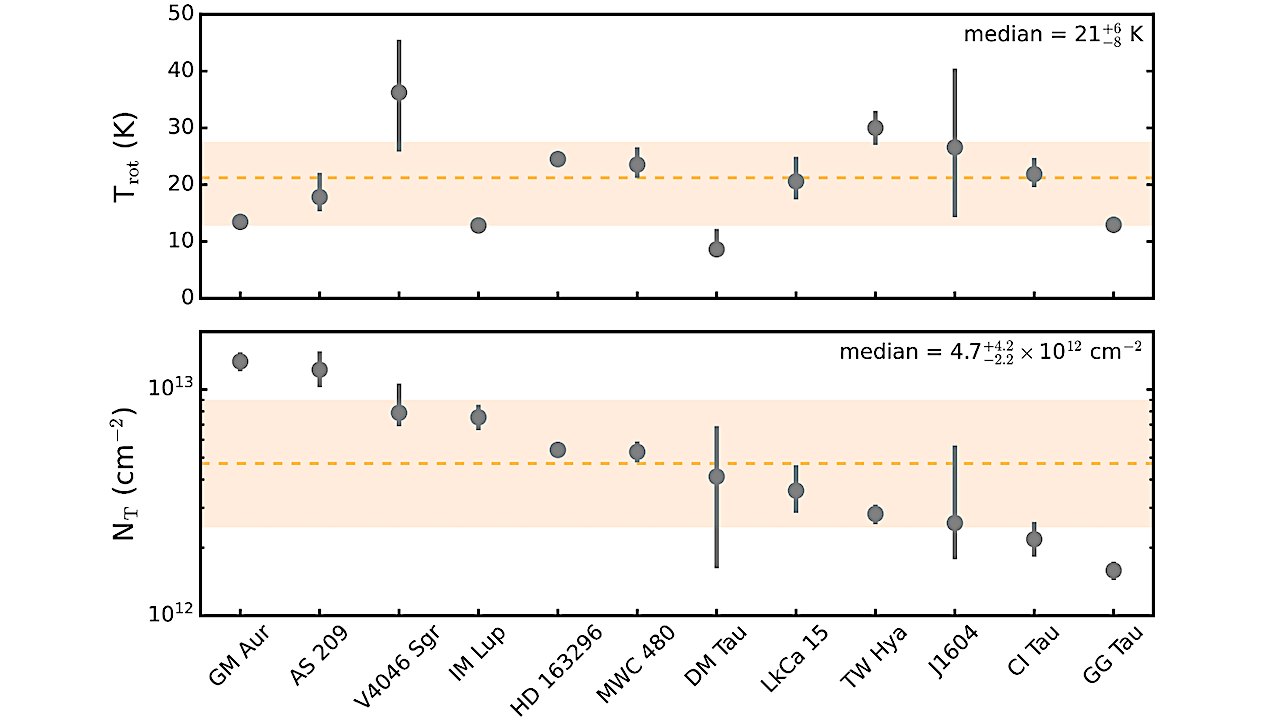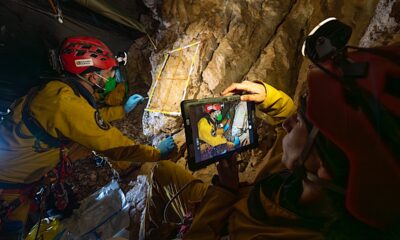Science
New Study Reveals Sulfur Chemistry’s Role in Planet Formation

A recent study has unveiled significant findings regarding sulfur chemistry in protoplanetary disks, emphasizing its crucial role in the formation of nascent planets. The research highlights that carbon monosulfide (CS) remains the most frequently observed sulfur-bearing molecule in these disks, which are essential for understanding planetary formation and potential habitability.
The study, published in the journal Astrobiology, reveals that CS is expected to dominate as the primary gas-phase sulfur carrier beyond the water snowline, an area in protoplanetary disks where temperatures drop low enough for water to condense into ice. This finding is significant as sulfur plays a vital role in the chemical processes that can affect the development of planets and their potential to support life.
Insights into Sulfur Molecules and Planetary Formation
Over the past decade, the inventory of sulfur molecules detected in protoplanetary disks has gradually expanded. Despite this progress, CS continues to be a focal point for researchers due to its abundance and importance. The study indicates that the excitation of CS is influenced by X-ray-driven chemistry, which can alter the chemical landscape of these disks.
This research builds on previous work that has established the significance of sulfur in planetary atmospheres and its potential for contributing to habitability. Understanding the dynamics of sulfur chemistry helps scientists predict the conditions under which planets develop, including the availability of essential elements for life.
The implications of these findings extend beyond theoretical models. As researchers observe these disks in various stages of evolution, they can better understand how sulfur and other elements contribute to the formation of different types of planets. This knowledge could ultimately inform the search for extraterrestrial life in other solar systems.
Future Research Directions
The study underscores the need for continued exploration of protoplanetary disks, particularly in relation to X-ray-driven processes. Future investigations could utilize advanced observational techniques from organizations such as NASA and the European Space Agency, which are actively studying disk environments through various missions and telescopes.
By enhancing our understanding of sulfur chemistry in these formative environments, scientists hope to refine their models of planet formation and assess the potential habitability of newly discovered exoplanets. The ongoing research not only sheds light on the origins of our own solar system but also extends the search for life beyond Earth.
In summary, the findings from this study offer valuable insights into the complex interplay of sulfur chemistry in protoplanetary disks. As researchers continue to unravel these cosmic mysteries, the potential for discovering habitable worlds grows ever closer.
-

 Technology5 months ago
Technology5 months agoDiscover the Top 10 Calorie Counting Apps of 2025
-

 Health3 months ago
Health3 months agoBella Hadid Shares Health Update After Treatment for Lyme Disease
-

 Health3 months ago
Health3 months agoErin Bates Shares Recovery Update Following Sepsis Complications
-

 Technology4 months ago
Technology4 months agoDiscover How to Reverse Image Search Using ChatGPT Effortlessly
-

 Technology1 month ago
Technology1 month agoDiscover 2025’s Top GPUs for Exceptional 4K Gaming Performance
-

 Technology3 months ago
Technology3 months agoElectric Moto Influencer Surronster Arrested in Tijuana
-

 Technology6 days ago
Technology6 days agoOpenAI to Implement Age Verification for ChatGPT by December 2025
-

 Technology5 months ago
Technology5 months agoMeta Initiates $60B AI Data Center Expansion, Starting in Ohio
-

 Technology5 months ago
Technology5 months agoRecovering a Suspended TikTok Account: A Step-by-Step Guide
-

 Health5 months ago
Health5 months agoTested: Rab Firewall Mountain Jacket Survives Harsh Conditions
-

 Health3 months ago
Health3 months agoAnalysts Project Stronger Growth for Apple’s iPhone 17 Lineup
-

 Lifestyle5 months ago
Lifestyle5 months agoBelton Family Reunites After Daughter Survives Hill Country Floods













